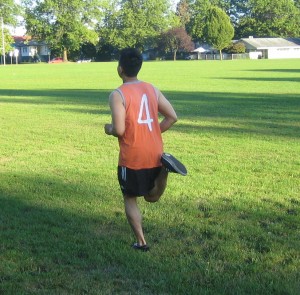There are instances in which some individuals experience overheating while exercising. It is important to note that when the body physically exerts during exercise, heat is produced and the core body temperature rises. The natural cooling system of the body is triggered and the individual starts to sweat.
In most cases, as the sweat evaporates from the body, the temperature eventually stabilizes and stays in an acceptable level. It is sad to note though that it does not always work that way. If the hypothalamus could not keep up in controlling the temperature, the body might start overheating which leads to heat-related illnesses such as heat exhaustion and heat stroke. Remember that there are several measures during exercise to prevent overheating.
- Encourage the individual to drink at least 2 cups of water at 30 minutes before starting an exercise program to maintain proper hydration during the exercise.
- Always check the weather conditions first before exercising outdoors. In case the forecast predicts a very humid or warm weather, it is best to exercise in the morning or evening when the weather is cooler or simply exercise indoors.
- Wear loose, lightweight, light-colored, moisture-wicking clothes while exercising to wick away sweat from the body and allowing it to evaporate and cool the body. Clothing made out of cotton must be avoided since they retain moisture and dry slowly. In addition, these can trap the heat which can lead to overheating.
- Always bring water at all times. As the body starts to sweat, it loses fluids and the individual can experience the signs of dehydration. This condition prevents the body from controlling the temperature properly and overheating occurs. The individual should drink water every few minutes to replace the fluids that were lost.

Wear loose, lightweight, light-colored, moisture-wicking clothes while exercising to wick away sweat from the body and allowing it to evaporate and cool the body.
What are the indications of overheating?
You have to closely watch out for the signs and symptoms of overheating such as the following:
- Headache
- Dizziness
- Muscle cramps
- Weakness
- Nausea
If the individual starts to feel sick during exercising, he/she must stop and drink water as well as rest in a cool area.
Important considerations to bear in mind
Always bear in mind that heat exhaustion can rapidly progress to heat stroke if immediate cooling measures are not provided. Heat stroke is considered as a life-threatening condition. If the individual has flushed skin, changes in consciousness or cessation of sweating, call for emergency assistance right way.
It is not advisable to drink alcoholic beverages before an exercise routine since it can lead to dehydration. If the individual plans to exercise for a prolonged period of time, it is best to bring along an electrolyte beverage to replace potassium, sodium and chlorine in the body that is lost thru sweating.

